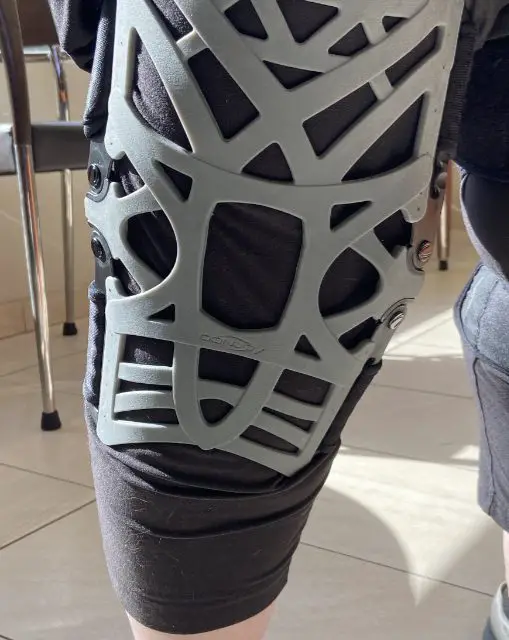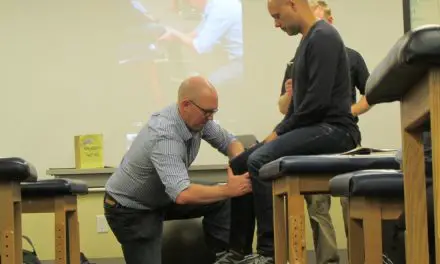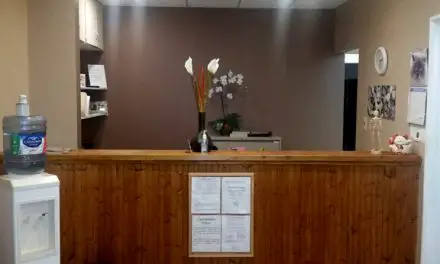Patellar tendinopathy, or jumper’s knee, has a long history of affecting athletes who play a variety of sports at all skill levels. This condition causes pain just below the kneecap in the patellar tendon (sometimes called a patellar ligament).
Teenage athletes who participate in high-impact sports (think running, jumping, and squatting) often suffer from jumper’s knee at some point during their athletic career. When the pain interferes with playing, a knee brace or a patellar tendon strap can help keep them active by alleviating the pain or other symptoms.
Patellar tendon bracing and strapping can relieve pain at the front of the knee and may alleviate the pressure on the irritated portion of the tendon. Bracing and strapping may be used together or separately depending on the intensity of symptoms during the activity.
Types of jumper’s knee brace
The patellar tendon strap has long been the first line of defense for jumper’s knee or patellar tendonitis/tendinopathy, but a new class of braces has emerged over the past several years.
It used to be that patella straps and basic knee sleeves were the only options for jumper’s knee, but the DJO Reaction line has changed the game.
The Reaction line brought to market a new class of braces that not only manages symptoms but has the potential to assist with difficult or painful movements through stored energy in the elastic web design.
The Reaction braces were invented by Dr. Bill Nordt, an orthpaedic surgeon in Virginia. Dr. Nordt saw a need in his active patients who were suffering from knee pain and took it upon himself to create prototypes until his design and material were perfected.
Basic knee sleeves provide compression, warmth, and support while also maximizing breathability and range of motion. These braces are readily available at drug stores and online and do not require a physician’s prescription. Insurance does not cover this type of bracing.
The newer DJO Reaction braces can absorb shock, distribute energy, and manage pain. Although these braces are available online without a physician’s prescription, they may be covered by insurance when ordered through a physician or a physical therapist.
Old faithful, the patellar tendon strap, is a great option for managing knee pain. These straps are easily applied and are much lower profile than the other brace options so they can easily be worn under your clothes if the pain is a problem off the field or court, too.
These devices are not covered by insurance and can be found in drug stores or online. They are the most cost-effective option in knee bracing.
How does a knee brace and a patellar tendon strap work?
Basically, knee sleeves keep your muscles, tendons, and ligaments warm. Just like the engine of a car, our bodies work better when they are warm, so applying a brace that speeds up this process usually feels good.
The DJO Reaction line claims to have more mechanical effects. According to DJO, “the REACTION WEB is a responsive, webbed approach to knee pain that gives a distinct alternative to the basic knee sleeve.”
This type of bracing takes advantage of the elastic properties of the material, which allow it to stretch and regain shape as you move.
And here’s the best part: as the brace moves back to the original position, it helps you move too! For example, the brace is the most stretched while you are in the deepest portion of your squat, and as you start to stand back up, the elastic energy stored in the brace helps you get there.
Patellar tendon straps may redistribute the force through the tendon during activity. The strap is placed over the painful area and then cinched snugly. This may effectively create a new insertion point for the tendon so that the irritated tissue has a chance to recover without affecting the athletes’ ability to play and compete.
What’s the difference between a knee brace and a patellar tendon strap?
Sleeves, straps, and braces can all help with knee pain. They may provide support, decrease swelling, or help lessen the severity of an injury, but none of them is a panacea. Even the best device on the market won’t prevent or heal an injury.
Dr. Nick Hoopes, a physical therapist at All-Star Physical Therapy in Ashtabula/Geneva, Ohio, occasionally uses this type of bracing with his patients.
“A lot of times, they are used in an attempt to provide short-term pain relief and a level of perceived security to the patient,” he said.
If the pain is at the front of your knee, a brace or strap can likely help manage your symptoms. The differences in the braces may matter less than what feels good to you.
While the sleeve tends to help provide warmth and compression, the newer braces and patella straps may change the distribution of forces through the tissues.
“I don’t have a good scientific answer; patient preference and comfort level is probably the biggest factor followed by clinical anecdotes,” Dr. Hoopes said when asked what he recommends to his patients.
At the end of the day, the best brace is the one that makes you feel good.
When do you use the knee strap for patellar tendonitis?
Patellar tendon straps are great if you want to keep moving, participating, and even competing while you’re having pain and symptoms. The strap can be worn whenever you feel discomfort, but it’s generally applied just prior to activity regardless of whether pain is present.
Pain from tendonitis may worsen with activity, so having the strap in place already can keep you moving beyond what you might be able to do without it.
What does research say about knee braces for jumper’s knee?
Extensive research has been performed on interventions for jumper’s knee.
Strap braces at best help with pain and symptoms,and at worst—do nothing. If you are having severe pain and symptoms, these devices are easy to find, fit, and wear. In short, strap bracing is the cheapest, least invasive option for addressing jumper’s knee.
In one U.S. study, researchers examined the use of patellar tendon straps in subjects with patellar tendinopathy. Participants performed single-leg landing tasks with and without the straps while having pain.
Using kinematics and ground reaction forces along with self-report of pain, they found that participants had decreased pain and improved landing mechanics when using the strap.
DJO’s claims stood up to the research too. This brace was tested in 18 to 40 year olds with anterior knee pain. Participants completed self-report questionnaires regarding pain and function, and then were instructed to wear the brace during all exercises and activities that had been painful.
The researchers followed up about six weeks later and found that participants had decreased pain, improved function, and better quality of life after wearing the brace.
There is little research on the use of simple knee sleeves for jumper’s knee. One study used a “souped-up” version of a sleeve that has specially designed compressive zones.
Manufacturers of this brace recommend its use for strains, sprains, repetitive motion injuries, and proprioception. Male and female athletes performed running, cutting, and hopping tasks with and without the brace.
They found that peak forces through the patellar tendon were lessened in the braced condition during hopping and cutting. This suggests that the risk of developing tendinopathy may be reduced when using the brace.
One way these braces decrease pain may be through enhanced proprioception. Essentially, proprioception is your body’s ability to know where it is in space without using vision.
An example of proprioception is what happens when you put your hand behind your back, you know what direction your palm is facing without having to look, thanks to the hard work of your proprioceptors. During an activity, proprioception helps refine movements and may reduce the risk of injury.
The effects of patellar strapping on symptomatic patients were examined in 24 athletes during a joint position sense test with and without the strap. The study found that the strap may be helpful in those that don’t have great proprioception to start with.
The strap didn’t work as well among those with bigger knees, a longer duration of symptoms, and more tendon damage. While bracing works for some, it’s not for everyone.
What’s the best jumper’s knee brace?
All said, bracing has somewhat fallen out of favor with physicians and rehab specialists alike. Most modern physical therapists and athletic trainers focus on decreasing reliance on external factors.
A solid rehab program carried out by a knowledgeable rehab professional will trump a brace every time. That said, in my own 20 years of working with athletes, I’ve seen patellar strapping work more often than not to reduce pain and symptoms in those who didn’t necessarily have an option to rest and recover.
A 2020 review suggests bracing or strapping for patellar tendinopathy is only one piece of the management puzzle in anterior knee pain. These devices can be helpful for short-term pain relief and to keep athletes participating in activity.
Ron Hutchins, an athletic trainer and strength coach in Danbury, Conn., recommends the Fluk Premium adjustable knee strap to his athletes with patellar tendinitis along with a heavy dose of education on jumping and landing form. He estimates as many as 80 percent of his athletes report improved symptoms when wearing the strap.
Jason Vereb, an athletic trainer and former field service representative for a bracing company in Gainesville, Fla., has extensive experience with orthopedic bracing.
In his experience, the reaction knee brace is most effective in patients with anterior knee pain who don’t also have patellar tracking issues (there’s an entirely different line of brace for these conditions). Its ability to disperse forces across the knee makes it a good option for those with mild to moderate knee pain.
If you have pain at the front of your knee that’s keeping you from running, jumping, squatting, and just generally doing the things you want to do, bracing and strapping may be worth looking into. There are easy to use cost-effective options that can decrease symptoms and keep you moving.

Penny Goldberg, DPT, ATC
Penny Goldberg, DPT, ATC earned her doctorate in Physical Therapy from the University of Saint Augustine and completed a credentialed sports residency at the University of Florida. She is a Board Certified Clinical Specialist in Sports Physical Therapy.
Penny holds a B.S. in Kinesiology and a M.A. in Physical Education from San Diego State University. She has served as an Athletic Trainer at USD, CSUN, and Butler University.
She has presented on Kinesiophobia and differential diagnosis in complicated cases. Penny has published on returning to sports after ACL reconstruction and fear of movement and re-injury.
Outside of the clinic, Penny enjoys traveling, good cooking with great wine, concerts, working out and playing with her dogs.





